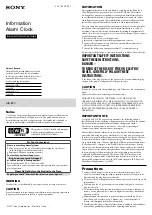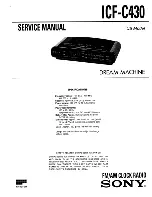
Connect the 4 wires to the power supply unit: Live feed
(L1), neutral (N), Ground ( ), lamp feed wire (L2).
The CAVIUS™ Wireless Family have two different alarm
signals:
Alarm signal 1 (--- --- ---) is life threatening alarms,
like a smoke alarm.
Alarm signal 2 (- - -) is a non life threatening alarm, like
a flooding alarm:
Smoke alarm signal:
--- --- ---
Heat alarm signal:
--- --- ---
Flood alarm signal:
- - -
CO alarm low level signal: - - -
CO alarm high level signal: --- --- ---
Please note that only the originating alarm’s red
LED
will flash, so it can be identified.
9.
PAUSE/HUSH FUNCTION:
If the smoke alarms are set into a false alarm by
cooking, fireplace, etc. they can be hushed for 10
minutes by pressing the test button on the originating
smoke alarm only (indicated by the flashing LED).
The reason for this is that it is necessary to locate the
source of the alarm before using the hush function. This
is to make sure that it is not a life-threatening situation.
OPTION 3: ALARM MOUNTED WITH LAMP SOCKET:
Drill through the middle of the alarm (Diam. 8mm)
Minimum 10cm
Install the power supply unit into the mounting base
ring or use the conduit box as shown in option 1 & 2.
NOTE:
Alarm supply must be different from the lamp
supply which can be switched ON and OFF.
Remove the plastic cover to access to the power supply
unit connector.
Pass the lamp wire through the smoke alarm.
Install the cableholder and replace the cover.
NOTE:
After putting the wires through the alarm, check
if the test button can move freely. If the hole is too
small the test button cannot move and will not function
correctly.
Light bulb: maximum 75W
Lamp: maximum 2 kgs weight
6.
TEST FUNCTION:
After installation, and at least once per quarter, test all
of your alarms to ensure they are operating correctly
and are within range of each other.
It is recommended to check visually every week if the
LED
flashes correctly (every 48sec.).
Press the test button on any alarm for at least 10
seconds.This will send out a test signal from the alarm;
all other connected alarms should receive the signal
within a short time. The alarms will emit a short beep
and the
LED
will flash every 8 seconds for 2 minutes.
NOTE:
Test function also transmits a weaker RF signal
to ensure an optimal operation in normal conditions.
When the test signal is sent out, the alarms will respond
in two ways:
1.
A single beep every 8 seconds indicates that the
alarms are connected and functioning.
2.
Three short beeps every 8 seconds indicates a
smoke sensor fault. The alarm should be cleaned by
running the vacuum (on a low setting) around the
smoke alarm chamber and in the provided vacuum slot,
then tested again.
If required this indication can be stopped early on each
alarm by a short press of the test button.
TIP:
It is safe to cover the sound output holes with
your finger or a cloth during the testing to minimize the
sound level emitted.
If the problem continues, please visit
www.cavius. co.nz
or
www.cavius.com.au
for any trouble shooting.
7.
NORMAL MODE:
In normal mode the
LED
will flash every 48 seconds to
show correct operation.
The green
LED
is on when the alarm is connected to
mains power. It may take up to 1 minute to indicate that
mains power has been connected.
8.
ALARM MODE:
When the smoke is detected, the smoke alarm will go
into
‘Alarm Mode’
. It will sound the alarm signal and
the red
LED
will flash.
The smoke alarm will also transmit the alarm signal to
the other connected alarms, which will also sound the
alarm signal after a short delay.
Install the wires as shown.
3
L1
N
L2
L2
N
N
L1 L2
N
L1 L2






















